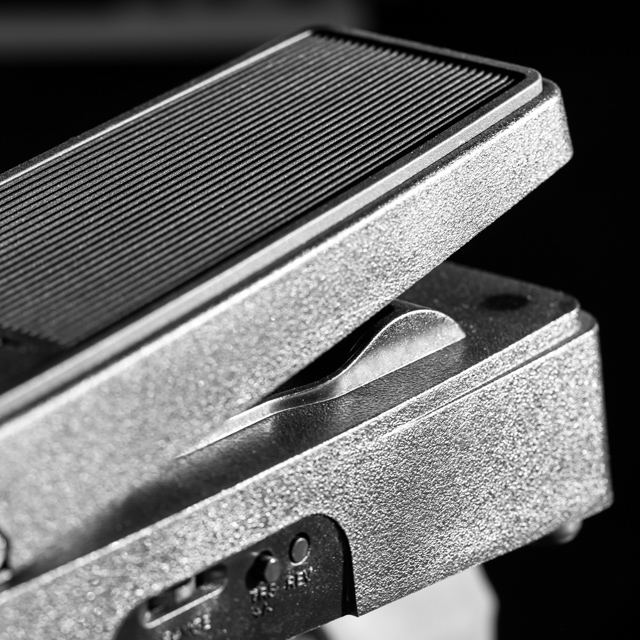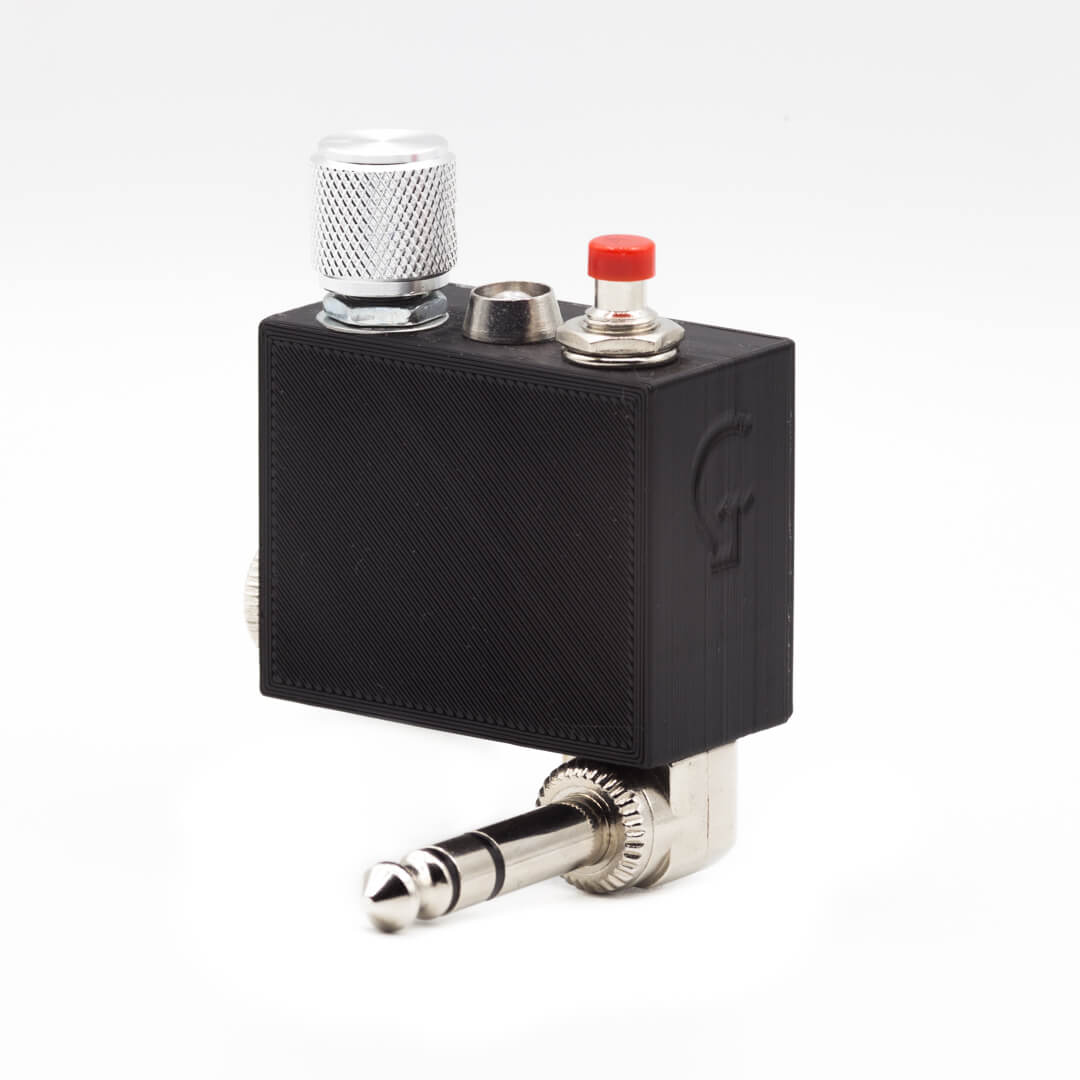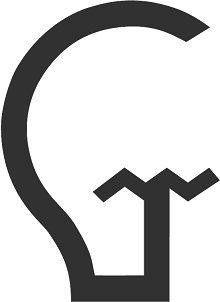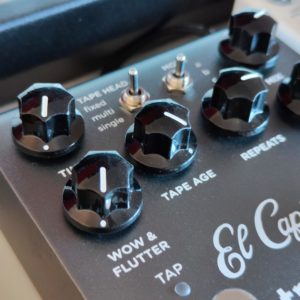 What is an expression pedal?
What is an expression pedal?
An expression pedal is (usually) a foot-controlled device that allows you to manipulate different parameters of your effects pedal in real-time. It becomes an extension of your effects pedal and, as the name suggests, its main use is allowing you to add motion, dynamics, and more organic performances.
This is especially useful for guitar, bass, and keyboard players, as typical expression pedals are designed to be used with the foot.
An expression pedal is not a stand-alone device. It doesn’t produce any sound and needs to be connected to an effects pedal in order to work. Its sole purpose is to control other pedals in an easier and more expressive way.
How does an Expression Pedal Work?
Imagine that instead of turning the volume knob on your pedal with your hand, you do it with your foot. That’s essentially the advantage of having an expression pedal connected to your effects pedal.
Once connected, the effects pedal detects and responds to changes from the expression pedal, adjusting the desired effects knob.
Most expression pedals work by using your foot position. Pressing down on the toe of the pedal typically increases the effect, while pressing down on the heel decreases it. However, this can vary depending on the specific pedal and how it’s set up.
For example, you can create a volume swell. You can gradually increase the volume by pressing down on the toe of the expression pedal. To decrease the volume, simply lift your toe. This technique can add dynamics to your playing and, most importantly, allows you to add these dynamics without having to stop playing.
Common Types of Expression Pedals
Although they can seem similar, let’s discuss the differences between volume and generic expression pedals.
Volume Pedals:
Specifically designed to control the volume of an audio signal, so for the previous volume swell example, a volume pedal would be the typical choice. These pedals do not need other effects pedals to work, because they’re intended to change the volume of an audio signal, not control another device.
Generic Expression Pedals:
As mentioned before, expression pedals don’t work with audio signals because their purpose is to control other pedals, not audio. They can be used with a wide range of effects pedals, which makes them much more versatile although more complex to use.
Although there are other variations, like expression pedals with integrated volume control and other multi-function pedals, I’m trying to keep it simple and just focus on standard expression pedals here. The rest of the article is centered on expression pedals only.
Cable Types
Most expression pedals are passive, meaning they don’t need any power to work, but they do need to be connected to the effects pedal you want to control with a cable.
 The two typical types of cables are:
The two typical types of cables are:
- TRS Cable (Tip – Ring – Sleeve): 1/4″ Stereo jack, used by most pedal manufacturers (not all of them). This is the most common cable for expression and also MIDI (both are control signals).
- TS Cable (Tip – Sleeve): 1/4″ Mono jack, very typical in patch cables of pedalboards (audio), but not so standard for expression. This one is more typical of volume pedals, but a few pedal brands use it for expression too, like Line-6. You’ll probably want to avoid these cables when dealing with expression pedals.
Technical Specifications
Before discussing how to connect an expression pedal, let’s delve into more detail about the expression pedal internals.
Another key concept is the internal potentiometer resistance value. All expression pedals have an internal potentiometer, usually between 10-50KΩ. This component receives some voltage from the effects pedal expression connector and returns a portion of that voltage back to the pedal depending on the potentiometer position (aka foot position). So despite expression pedals being passive circuits, they use the voltage coming from the effects pedals.
When considering potentiometer resistance for expression pedals, it’s always best to consult your effects pedal manual first for specific recommendations. Typically, TRS expression pedals are wired as voltage-divider circuits, which enhances compatibility as long as the resistance exceeds 10KΩ. If the resistance value is inadequate, you may notice that the potentiometer’s range is either limited or changes abruptly.
We’ve mentioned before that expression pedals use voltage coming from the effects pedals. This voltage isn’t always the same, and you should check it too, especially if you plan to use more complicated expression pedals that require dedicated voltage to work, like Echo Knob. The typical voltage is 5V, although some brands like Hologram Electronics Microcosm use 3V and others use voltages above 5V. For standard expression pedals without dedicated power, you’ll probably be fine regardless of voltage.
Keep in mind there are also other variations omitted here in order to simplify. Pedals with non-standard polarity (meaning some of the wires are inverted), non-standard voltage or resistance, logarithmic…
How to connect an Expression Pedal
The first thing you want to do is check whether your pedal has an expression input or not. Not all effects pedals can be controlled with an expression pedal. The input will usually be labeled as EXP or EXP/CV (control voltage) depending on the brand.
In some cases, the pedal has just input/output audio connections and external control is not possible.
Next, you need to know the type of cable needed to connect the expression pedal to the effects pedal. This information can usually be found in the pedal manufacturer’s manual (TS / TRS types).
Configuring Your Expression Pedal
Once the expression pedal is connected, the effects pedal needs to be configured to change the parameter(s) that are desired to be controlled externally with expression.
Depending on each pedal, the configuration method will be different, although it’s usually very similar in pedals of the same brand. In any case, you’ll need to check the pedal’s manual to find the way to configure it.
One important thing to check is if the pedal allows single or multiple parameter control.
Single parameter:
The expression pedal acts as an extension of the effects pedal, mimicking knob movements when you operate it. In this case, the main benefit of the expression pedal is to have hands free to play while changing a parameter, and in some cases, the pedal allows you to set the expression max value (check benefits list).
Multiple parameters:
The expression pedal will be able to change multiple parameters of the effects pedal at once. Many times this is achieved by selecting initial and final positions for each effects knob, and then the expression pedal will “move” all the knobs within the selected range.
Once the expression input is configured, you can start experimenting with pedal position, settings, and how they affect expression.
Benefits of Using an Expression Pedal
- Hands-free:
Change the sound in real-time without having to stop playing.
- Ergonomic flexibility:
As an external device, it offers greater positioning freedom compared to built-in controls on effects units. This allows musicians to place the pedal in a more comfortable and accessible location on their pedalboard or stage setup, even at a distance from the effects unit itself. Here you also need to consider the space left on your pedalboard, especially when controlling multiple pedals.
- Max Value Limit (in some cases):
A feature is offered by some effects pedals that allows a parameter’s max value to be limited when an expression pedal is connected. A new maximum value is set by the knob position on the pedal itself, and the range is constrained within these limits. This is particularly useful when adjusting the knob directly results in abrupt changes. This way, you can leverage the full range of the expression pedal to make precise adjustments within a more controlled parameter range. This acts as a safety net, preventing unintended extreme changes to your sound during performance or recording.
- Multiple parameter adjustment (in some cases):
Ability to control multiple effect parameters at once, creating complex sound changes with a single motion of the foot/hand, or morphing between two different presets if the effects pedal works this way (some Strymon pedals, for example).
As a curiosity, it seems there’s a Moog Moogerfooger that “unlocks” extra range in some knobs via expression!
Advanced Expression Pedals
 Expression pedals generate control signals, not audio. This seemingly uninteresting fact is actually powerful. It allows effects pedals to connect with devices that create automatic expression patterns, like a Low Frequency Oscillator (LFO).
Expression pedals generate control signals, not audio. This seemingly uninteresting fact is actually powerful. It allows effects pedals to connect with devices that create automatic expression patterns, like a Low Frequency Oscillator (LFO).
This means we can change the knobs of a pedal faster than we could with our foot, create automatic swells, or generate random knob positions.
It’s inspiring to think that an old pedal with expression could potentially generate new, innovative sounds thanks to new technology.
El Garatge Echo Knob is an example of an expression device that includes an LFO with some additional features. My newest, more experimental expression device is the Tripl3X, which uses a static electricity detector to change expression. As you can see, expression can open up a whole new world of possibilities.
Other brands are also finding new ways to increase expression possibilities, like LEEMS Industries and Pedal Brainz.
Conclusion
What benefits and possibilities resonate most with you? What are you seeking in your sound? Expression pedals aren’t always necessary, but don’t let this deter you from exploring new sonic territories.
In conclusion, I’d like to share what I found missing in my setup. As a piano and synth player, I longed for the ability to adjust multiple parameters while maintaining a compact setup. Some pedals are quite complex, and when you need to pause playing, it’s crucial to make desired changes swiftly.
The El Garatge Expression Knob was created as a compact, hand-operated expression pedal. It offers quick adjustments near my keyboard for my Chase Bliss Blooper pedal. This small device allows expression control on multiple pedals without space concerns. While most guitarists prefer foot-controlled pedals, this solution better suited my specific needs.
As creators, addressing our own challenges can often lead to innovations that resonate with others facing similar issues. Sometimes, the best solutions arise from our personal experiences and needs.
I hope this article was useful and hopefully solved some of your doubts related to expression. Contact me if I missed any basic aspect of this topic or if you want to help me improve it!
Relaxing video to end, playing with Expression Knobs + Chase Bliss pedals:

